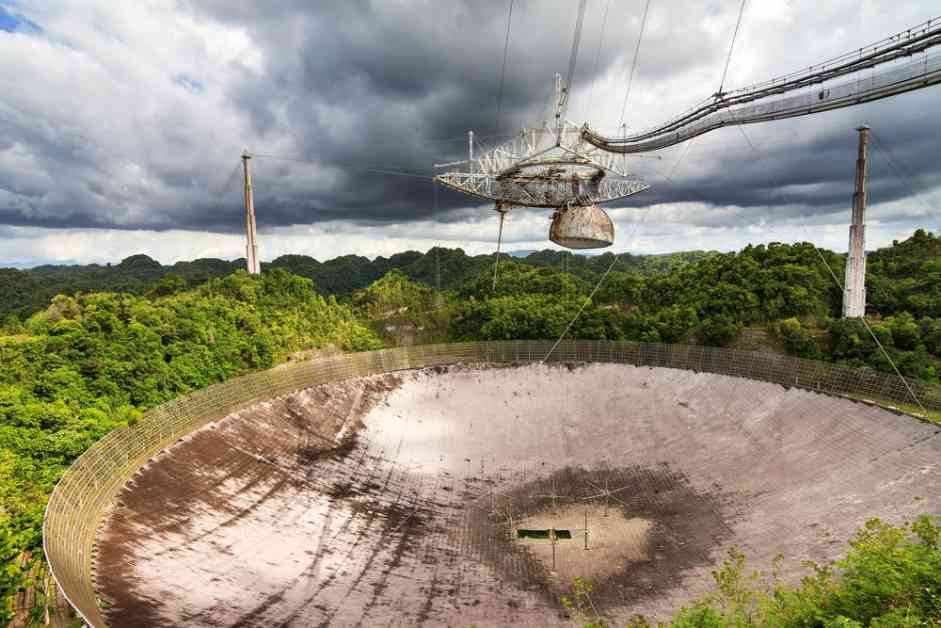The collapse of the Arecibo Observatory’s 305-meter telescope in 2020 has been linked to zinc creep, a slow deformation process caused by stress in the telescope’s cable spelter sockets. This finding comes from a committee report by the National Academies of Sciences, Engineering, and Medicine, which suggests that low-level electric current may have accelerated this process through electroplasticity.
The Arecibo Telescope, which was built in 1963 and was the largest single-aperture device in the world until 2016, played a significant role in scientific discoveries such as identifying the first known binary pulsar. Despite being damaged by Hurricane Maria in 2017, the telescope remained operational until 2020 when a supporting cable broke, leading to its eventual collapse. Efforts to repair the telescope in November 2020 were unsuccessful, resulting in the decision by the National Science Foundation (NSF) to demolish the structure.
In place of the telescope, the NSF plans to establish a science education facility called the NSF Arecibo Center for Culturally Relevant and Inclusive Science Education, Computational Skills, and Community Engagement (NSF Arecibo C3) next year.
The committee report builds on previous analyses by proposing a hypothesis that suggests exposure to electromagnetic radiation hastened the telescope’s failure. This hypothesis aims to address unanswered questions surrounding the failure of the telescope sockets and cables, despite having a safety factor above two.
The report highlights the need for a more comprehensive forensic analysis of socket quality and zinc creep, emphasizing the importance of considering the impact of low-current electroplasticity on the telescope’s components. Further research is required to understand how electric current flowing through zinc in a radio telescope environment can affect its creep rate over time.
The report also includes recommendations for enhancing the safety of similar projects in the future, emphasizing the importance of adequate funding, diligent oversight, and maintenance practices. The US National Science Foundation has expressed gratitude to the National Academy of Sciences for their review and is open to incorporating their recommendations in future projects.
In conclusion, the findings of the committee report shed light on the complex factors that contributed to the collapse of the Arecibo Telescope and underscore the importance of ongoing research and analysis to prevent similar incidents in the future.













